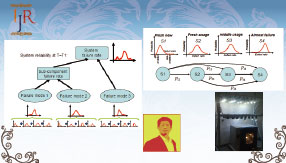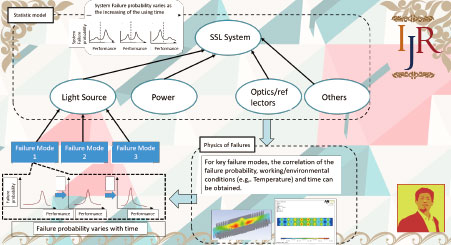
SSL system Reliability: Graphical approach
Solid State Lighting system reliability, including module, luminaire and up to lighting complicate system, is essential for system/solution providers. Failure of a complex SSL system always consists of multiple root causes at component level, and multiple interactions of these multiple failure modes. In this research we provide a graphical statistical based framework to approach SSL system reliability prediction. This modeling framework could predict the SSL system lifetime and meanwhile indicate the most critical component / fail-ure mode. The full development such method will improve the SSL module, luminaire and system reliability.
Dr. Yuan have developed a statistical approach for the system reliability since 2013. He applied the concepts of (1) fault tree (2) Bayesian network and (3) Markov Chain.

Fault tree is a technique which allows the analysis of a system in the context of its environment and operation to find the largest number of credible ways in which an undesired state of a system may happened . It is a reasonable reprehensive of the root cause of the system failure and indicates the interactions among failure modes. For example, a simple 3-LED SSL lamp, which consisted of 4 major failure modes, including LED depreciation, LED catastrophic failure, solder joint failure and driver failure.
We understand the Bayesian Networks (BN) as Directed Acyclic Graphs (DAGs) whose nodes represent univariate random variables and whose arcs represent direct qualitative dependence relationships between variables represented by adjacent nodes. The direct predecessors (successors) of a node are called parents (children). The main use of BNs is to update distributions given observations. If some variables have been observed, we want to infer the probabilities of others which have not yet been observed. The influences represented by the arcs of a BN may be probabilistic or deterministic.
A Markov Chain is a stochastic process that describes transitions in time between a discrete number of states. A dynamic Bayesian network (DBN) is an extension of the concept of static Bayesian networks by incorporating (discrete) time. Thus a DBN, models a discrete-time stochastic process. A DBN is represented by a col-lection of static Bayesian networks, one at each time-slice, together with arcs between nodes in different time-slices.

Moreover, Dr. Yuan applied the concept of "Physics of Failure (PoF)" on top of this graphic approach to make it more feasible for industrial application. As illustrated in the photo, with respect to key failure modes, the correlation between the failure probability, environmental/working condition, and time, should be first acquired, by experiment and modeling techniques. Next, individual failure modes (with its "boundary conditions") should be assembled and form the Bayesian Network, and the evolvement of the failure probabilities of each failure modes are described by Markov Chain. Then, the physical-statistical time-dependent system reliability model can be achieved.
